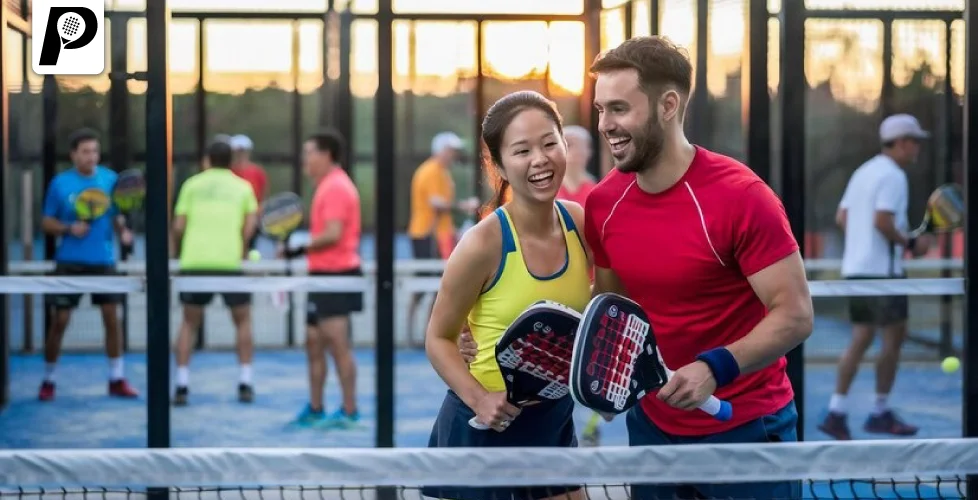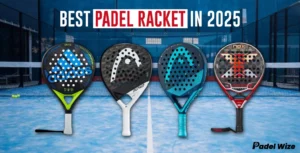Padel, the fast-growing racquet sport combining elements of tennis and squash, is capturing the hearts of sports enthusiasts worldwide. As its popularity surges, the demand for well-organized is growing. padel tournaments and events Whether you’re an experienced event planner or new to the game, here’s a comprehensive guide to organizing successful padel tournaments and events
Related blog Gear Up for Success: A Guide to Padel Equipment
1. Planning and Preparation
Clearly define your event objectives and set a realistic budget to guide all logistical decisions. Choose an accessible venue and date that aligns with your target audience and goals.
Define Your Objectives Before diving into the logistics, clearly outline the objectives of your tournament or event. Are you aiming to attract local players, host a charity event, or create a competitive platform for emerging talent? Defining your goals will help shape every aspect of the padel tournaments and events.
Set a Budget Determine a realistic budget that covers all aspects of the tournament, including venue rental, marketing, staffing, equipment, and prizes. Having a well-defined budget will guide your decisions and ensure you’re financially prepared.
Choose a Date and Venue Selecting a suitable date and venue is crucial. Consider the availability of local players and potential conflicts with other events. Choose a venue that is accessible, has quality facilities, and can accommodate the expected number of participants and spectators.
Related blog Organizing a Padel Deporte Tournament: A Step-by-Step Guide
2. Organizing the Tournament
Select a fair and engaging format for the competition and set up a smooth registration process. Develop a detailed schedule that accommodates players and minimizes downtime.
Format and Structure Decide on the format of the tournament. Common formats include round-robin, knockout, or a combination. The format should cater to the number of participants and the level of competition. Ensure that the structure is clear and fair.
Registration and Entry Set up an efficient registration system. Use online platforms to simplify the process for participants. Clearly communicate deadlines, entry fees, and any requirements. Ensure that the registration process is smooth to avoid last-minute issues.
Scheduling Matches Create a detailed schedule that allows for smooth flow and minimal downtime. Ensure that players have adequate rest between matches and that the schedule is flexible enough to accommodate any unforeseen delays.
3. Promotion and Marketing
Build a strong event brand and leverage social media to generate buzz and engage with your audience. Partner with local media to extend your reach and enhance visibility.
Build a Strong Brand Develop a compelling brand for your tournament or event. This includes creating a memorable name, logo, and theme. A strong brand will help in marketing and attract participants and sponsors.
Leverage Social Media Utilize social media platforms to create buzz about your event. Share updates, player profiles, and behind-the-scenes content to engage with your audience. Consider using event-specific hashtags to increase visibility.
Engage with Local Media Reach out to local newspapers, radio stations, and sports blogs to cover your event. Media coverage can help in reaching a wider audience and gaining credibility.
Related blog Top Padel Rackets Used in Major Padel Tournaments
4. Day-of Event Management
Ensure all logistics are in place and staff are ready to handle various aspects of the event smoothly. Provide support services and remain adaptable to address any unforeseen issues.
On-Site Organization Ensure that everything is set up before the event starts. This includes setting up registration desks, signage, and courts. Have a team in place to manage different aspects of the event, such as scheduling, scorekeeping, and player assistance.
Provide Support and Services Offer support services such as medical assistance, food and beverages, and facilities for players and spectators. Ensure that there are enough staff or volunteers to handle inquiries and any issues that arise.
Monitor and Adapt Be prepared to adapt to any changes or challenges on the day of the event. Monitor the schedule, handle any disruptions promptly, and ensure that the event runs smoothly.
5. Post-Event Activities
Gather feedback from participants and staff to evaluate the event’s success and identify areas for improvement. Celebrate achievements, acknowledge contributors, and use insights to enhance future events.
Feedback and Evaluation Collect feedback from participants, spectators, and staff to evaluate the success of the event. Use surveys or informal conversations to gather insights on what worked well and what could be improved.
Celebrate and Acknowledge Acknowledge the efforts of all involved, including volunteers, sponsors, and participants. Celebrate the successes and share highlights through social media and press releases.
Plan for the Future Use the feedback and experiences from this event to plan future tournaments. Identify areas for improvement and consider how you can enhance the experience for participants and spectators.
Related blog Mastering the Game at Your Padel Club: Tips and Techniques
Conclusion
Organizing a padel tournament or event requires meticulous planning, effective promotion, and seamless execution. By following these steps, you can create an engaging and successful event that celebrates the spirit of padel and fosters a thriving community around the sport. Whether you’re aiming to host a local competition or a major tournament, the key is in the details and the passion you bring to the event. Enjoy the process, and good luck with your padel endeavors.







